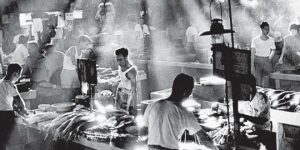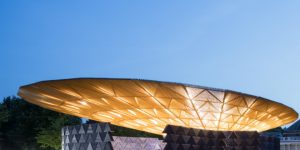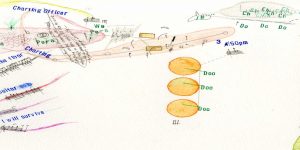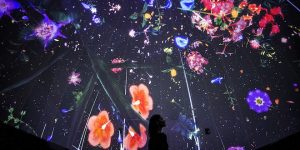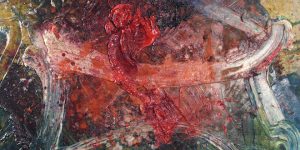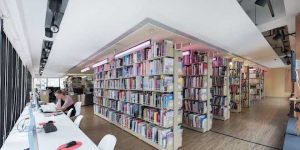Of Life and Love: Hasanul Isyraf at Richard Koh Fine Art
Malaysian artist Hasanul Isyraf Idris’s eclectic drawings combine reality and fantasy

Hasanul Isyraf Idris, ‘Oxygen Seatbelt’, 2017
Hasanul Isyraf Idris (b. 1978) finds inspiration for his art practice from a multitude of sources such as life and death, memories and fantasies, folklore and myths as well as his personal struggles as an artist in a complex mix of characters, symbols and text in a variety of languages.
In the past year, Richard Koh Fine Art has presented Hasanul’s works at Art Stage Singapore 2017, Art Central 2017 and Volta Basel 13, and will also show pieces from his ‘Higher Order Love – Chapter 2.2, Wound: Harvesting Cadavercaviar’ series at ART021 Shanghai in November. When asked about the intriguing title, Hasanul explains that he came across the letters HOL on a piece of broken headstone in a graveyard. A Google search revealed that HOL is an acronym for Higher Order Logic (a complex high-level mathematical theory) but he decided to re-assign the letters to ‘Higher Order Love’ as he felt that love is a more powerful proclamation than logic.
The titles of the individual artworks are a mix of biological and scientific terms but with a twist: ‘St Enzyme’, ‘Oxygen Seatbelt’ and ‘Wormazing’ are some examples. Hasanul cautions us to not read too much into the titles and likens his works to freestyle jazz where rhythms are deconstructed, altered, extended, or broken down to form another rhythm. He says of his HOL pieces: “if we “listen” to the visual from left to right, we would not find a linear narrative. The tone is chaotic in its order. That is why the titles do not have a fixed or straight answer for the visual of the drawing. It is best to not read the visuals or try to connect them literally to the title. Instead, just “listen” and feel”.

Hasanul Isyraf Idris, ‘St Enzyme’, 2017
From afar, the works appear as intricate webs of beautiful images, patterns and pastel colours. A closer inspection, however, reveals symbols of not only life and beauty but also of death and decay. Evocative of Hieronymus Bosch’s famous triptytch ‘The Garden of Earthly Delights’, this latest series was conceptualised two years ago when Hasanul ventured into gardening. Since then, he says, he has learned a lot from growing seedlings, fertilising, watering the plants and making compost. While the composting process is the end cycle of a plant’s life, it is also the means of regeneration for the ecosystem. ‘Handcarrion Arrival’ and ‘Handcarrion Departure’ are centered around these cycles of birth, growth, death and regeneration.
Hasanul grew up close to the sea and says that the flora, fauna, climate and geography of it are very much embedded in his mind and lifestyle. The lobsters and crabs that inhabit his canvases are symbolic of the sea’s harvest and form a part of his visual identity.
The artworks are a combination of ink, acrylic, watercolour, and colour pencils. When the artist first started with this technique it used to take him almost three months to complete a single work. But now, he says, with practice and the help of a studio assistant, he can work faster.

Hasanul Isyraf Idris, ‘Handcarrion Departure’, 2017
Earlier chapters of HOL include ‘Chapter 1: The Fall’, which presents scenarios that range from the experience of falling off a bike to the sensations of falling in love for the first time. They include moments of bliss and periods of gloom signifying the artist’s view of life – as a precious collection of memories and physical sensations to be cherished. ‘Chapter 2.1, Wound: Grey Marrow’ records Hasanul’s journey with medicine. Minor surgeries on pets and livestock as well as the memories of family members journeys through illnesses are intimately archived and reconceptualised in his drawings. ‘Bottom of the Bowl’ in this series is a serene pastel work that leans toward the melancholic. Hasanul explains that the flower motifs are a reference to the decoration on the plates which belonged to his late mother whose ancestral roots are in China and the pastel hues were her favourite colours during her final years.
Many of the works in these earlier series have the unique feature of a detailed border. The artist says that the inspiration for them comes from the tiles in his parents’ house which have a repetitive element and remind him of Mondrian’s geometric paintings. To him, the patterns that surround the drawings are not borders that contain or separate. Instead, he says, “they are more like pillars that bind the drawing, and are also a mark or my own personal emblem”.
More information at rkfineart.com.
This article was written by Durriya Dohadwala and was originally published in the print edition of Art Republik.




